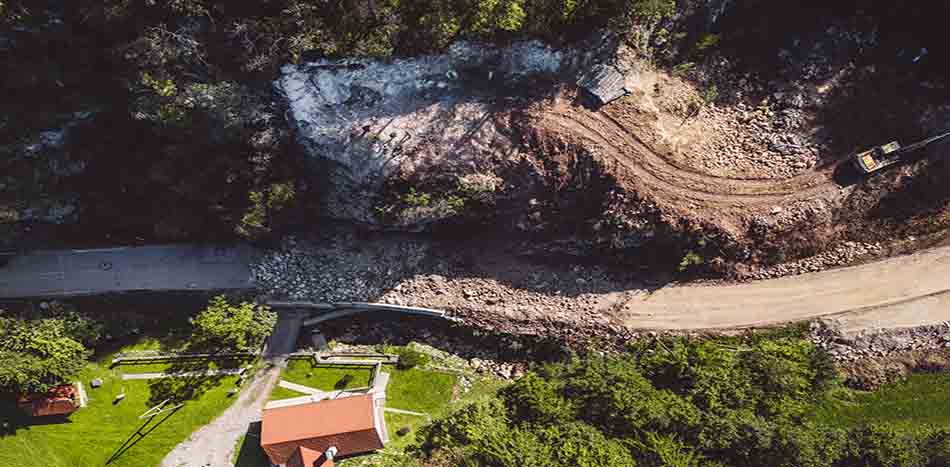7 Crore+ Customers

Affordable Premium

7 Crore+ Customers

Affordable Premium



Landslides refer to gravitational movements of mass of rock downwards on a slope. As per a report from Geological Survey of India (GSI), 12.6% of the total land area in India are prone to landslides. Hence, correct knowledge about the causes of landslides is essential to take timely preventive measures and ensure safety. Keep reading to learn about its causes, types and other vital details.
Take a look at the 5 factors that trigger landslides in India:
Human interference is one of the major causes of landslides in India. Deforestation is one such phenomenon which may trigger landslide. For example, the Himalayan region has become more vulnerable to landslides due to the indiscriminate cutting of trees.
Removal of trees reduces the binding properties of soil and rocks. This enables the water to seep into the sub-surface, making the topsoil vulnerable. Even GSI confirmed that increased deforestation is one of the reasons for landslides in Western Maharashtra and the Konkan region.
Shifting cultivation is common in hilly regions and Northeast areas. Every year, residents burn the forests for cultivation purposes. However, this deteriorates the quality of topsoil, causing erosion during heavy rainfall. This makes such regions more vulnerable to landslides.
Above 40% of the Kumaon Himalayan region are vulnerable to landslides due to earthquakes. Additionally, heavy rainfall often causes landslides. For example, heavy rain caused landslides in Talai village of Maharashtra in 2021.
Human activities like mining or quarrying remove the vegetation cover and soil gravel. This lowers the groundwater retention capacity. Also, it increases the risk of flooding. Therefore, landslides occur due to loose debris or excess floods during an earthquake and heavy rainfall, respectively.
Increasing population pressure in few regions of India is alarming. For example, Dharamshala is prone to landslides. It is one of the fastest developing cities in the Himalayan region. Here, intensive urbanisation activities such as establishing commercial housing projects and road construction reduce the vegetation cover. This leads to an increasing frequency of landslides in this region.
Landslides in India are divided into four categories -
|
Types of Landslides |
Meaning |
|
Topples |
This occurs due to fracture in rocks. It causes tilting for gravitational pull without collapsing. |
|
Falls |
This involves the collapse of rocks or debris from a cliff or slope. It results in the collection of debris at the base of a hill. |
|
Spread |
It occurs in gentle slopes where soft debris or other materials are widely available. |
|
Slides |
It occurs when debris, rocks or soil slide through a slope. |
Note the following impact of landslides in India:
Landslide zones in India are divided into the following areas -
Take the necessary steps mentioned below to control landslides in India:
Natural calamities are unforeseen, but it creates significant physical and economic damages. Choose Bharat Griha Insurance Policy to protect yourself from such damage. Let's take a look at what does it cover in its insurance plan:
Bharat Griha or Standard Fire and Special Perils policy extends financial coverage for damages caused by the following natural disasters:
Features